Best of Brainiac (2)
By:
January 31, 2010
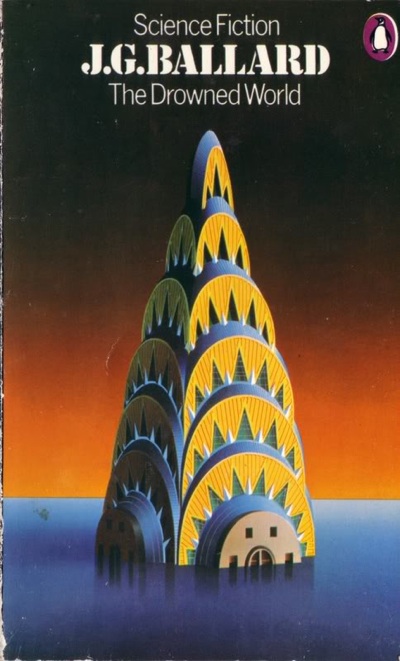
“The planet has a fever,” Al Gore told Republican skeptics in Congress on March 21. “If your baby has a fever, you go to the doctor. If the doctor says, ‘You have to intervene here,’ you don’t say, ‘Well, I read a science fiction novel that says this isn’t important.'”
[A slightly different version of this item originally appeared at the Boston Globe Ideas section’s blog, Brainiac, in April 2007.]
Liberal commentators relished the soundbite. “Hmm,” wrote The New Republic’s Michael Crowley, at that magazine’s political blog, The Plank. “I wonder what that might have been a reference to.”
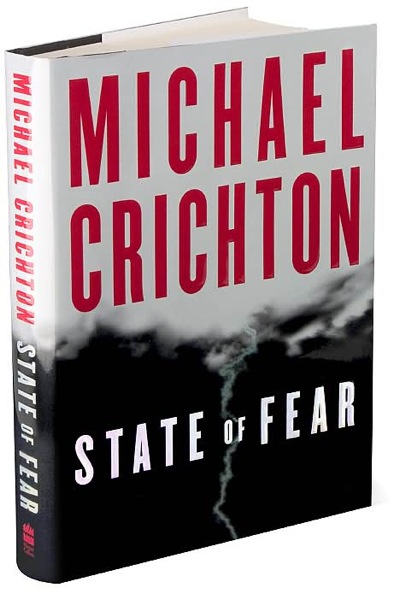
Gore, everyone assumed, was taking a shot at Michael Crichton’s 2004 techno-thriller, State of Fear, in which fictional MIT scientist John Kenner — who has been charged with thwarting a band of eco-terrorists intent on causing catastrophic climatic change — argues that the threat of man-made greenhouse gas emissions has been exaggerated by environmentalists. One State of Fear fan, Senator James Inhofe, the Oklahoma Republican who has described global warming as the “greatest hoax ever perpetrated on the American people,” invited Crichton in the fall of 2005 to appear as a star witness before a Senate hearing on the role of science in environmental policy making.
But Michael Crichton isn’t the only science fiction writer who’s taken catastrophic climatic change, real or imagined, as his theme. During the early Cold War, his predecessors dreamed up one apocalyptic scenario after another. Many of these involved greenhouse gases, but others were a good bit more creative, involving everything from meteors to the bomb. Might Al Gore have had one of these works of fiction in mind?
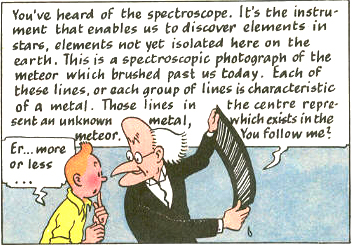
Tintin and the Shooting Star (1946), by Hergé. In the opening pages of this episode in the Belgian newspaper-strip, things are literally heating up: Car tires explode, rats flee the sewers, and Tintin’s dog Snowy gets stuck to the melting tarmac. It turns out that the heat is caused by the approach of a meteorite on a collision course with Earth. “Great heavens! But that’ll mean…” Tintin cries. “THE END OF THE WORLD, YES!” agrees an astronomer. Luckily, the experts have miscalculated.

The Kraken Wakes (1953), by John Wyndham. In this semi-satirical British novel by the author of The Day of the Triffids, aliens plunge into the Earth’s oceans. After failing to take over the planet by attacking ships and capturing humans from seaside villages, the invaders proceed to melt the polar ice caps. London and other cities are flooded, civilization crumbles, and four-fifths of the world’s population die before humankind finally triumphs.
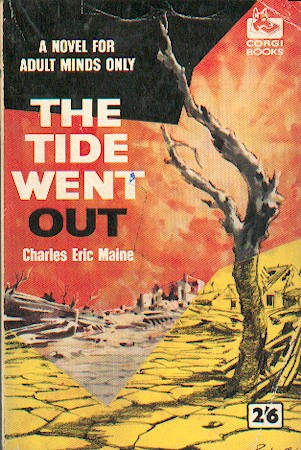
The Tide Went Out (1958), by Charles Eric Maine. In this British novel, global warming is caused by humans — but it has nothing to do with carbon dioxide. Nuclear tests somehow cause a worldwide drought, at which point the world’s government leaders and their militaries relocate to the ice caps, leaving the majority of the population to die of thirst, starvation, and disease.
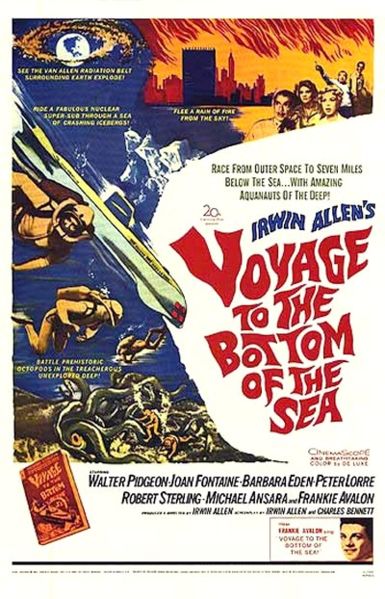
Voyage to the Bottom of the Sea (1961), written and directed by Irwin Allen. Walter Pidgeon must use atomic weaponry to save the Earth from global warming. It seems that the Van Allen radiation belt girdling the planet has caught fire, and the atmosphere is becoming uncomfortably hot. Pidgeon, accompanied by Peter Lorre, Frankie Avalon, and Barbara Eden, sets out in a nuclear sub to extinguish the “sky fire” with a well-aimed missile.
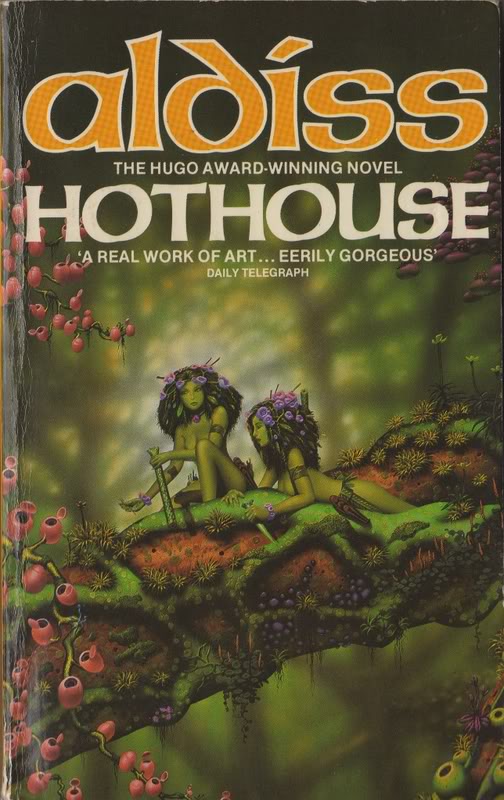
Hothouse (1962), by Brian Aldiss. Millions of years from now, the Earth has stopped rotating, and one side constantly faces the sun, which has expanded and is about to go nova. The last remnants of humanity seek to escape from carnivorous plants and mutated insects to the moon, which now has a breathable atmosphere. And did I mention that the moon is attached to the Earth with cobwebs?
ADDENDA
In my item about post-apocalyptic global warming novels, I should have included The Drowned World, a 1963 novel by the great J. G. Ballard. I’ve read Drowned World, years ago, but left it off the list because I thought Ballard’s book placed the blame for global warming on pollution/greenhouse gases, and the point of the Ideas item was to locate sci-fi novels in which the climate heats up on its own (or because of aliens, or an approaching asteroid). But Geoff Manaugh informs me that I’ve misremembered Drowned World. He writes:
Ballard: “A series of violent and prolonged solar storms lasting several years caused by a sudden instability in the Sun had enlarged the Van Allen belts and diminished the Earth’s gravitational hold upon the outer layers of the ionosphere. As these vanished into space, depleting the Earth’s barrier against the full impact of solar radiation, temperatures began to climb steadily, the heated atmosphere expanding outwards into the ionosphere where the cycle was completed.” The result is “a nightmare world of competing organic forms returning rapidly to their Paleozoic past.”
Meanwhile, fellow Brainiac blogger and Ideas writer Jan Freeman nominates One in Three Hundred (1954), by J. T. McIntosh, in which only a few humans can survive the sun’s nova to escape to Mars. “I remember I read most of it standing up in the library: Not just un-put-downable but un-sit-downable!” raves Jan.
JOSH GLENN’S *BEST ADVENTURES* LISTS: BEST 250 ADVENTURES OF THE 20TH CENTURY | 100 BEST OUGHTS ADVENTURES | 100 BEST RADIUM AGE (PROTO-)SCI-FI ADVENTURES | 100 BEST TEENS ADVENTURES | 100 BEST TWENTIES ADVENTURES | 100 BEST THIRTIES ADVENTURES | 75 BEST GOLDEN AGE SCI-FI ADVENTURES | 100 BEST FORTIES ADVENTURES | 100 BEST FIFTIES ADVENTURES | 100 BEST SIXTIES ADVENTURES | 75 BEST NEW WAVE SCI FI ADVENTURES | 100 BEST SEVENTIES ADVENTURES | 100 BEST EIGHTIES ADVENTURES | 75 BEST DIAMOND AGE SCI-FI ADVENTURES | 100 BEST NINETIES ADVENTURES (in progress) | 1994 | 1995 | 1996 | 1997 | 1998 | 1999 | 2000 | 2001 | 2002 | 2003 | NOTES ON 21st-CENTURY ADVENTURES.
In September 2006, Joshua Glenn launched Brainiac, a blog published by the Boston Globe’s Ideas section. He retired from Brainiac in June ’08, to pursue new projects; in February ’09, he cofounded HiLobrow.com. This post is the second in a series of ten commemorating Glenn’s brief tenure as a professional blogger.
